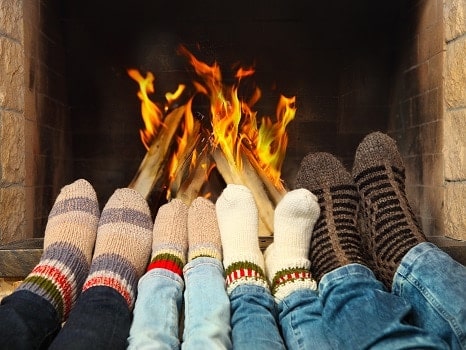Leaning towards an old wood-burning fireplace to help cut your heating bill this winter? Before you spark a log you should know, fireplaces and chimneys are involved in 42% of all home-heating fires. So, before you use your fireplace, ensure you know how to properly use it and follow these safety tips.
- Hire a chimney sweep – The National Fire Protection Association recommends that chimneys be swept at least once a year to remove soot and debris. A professional chimney sweep should also inspect for any damages.
- Cap your chimney – Chimney caps will keep rain, birds, squirrels, and debris from entering your chimney. Repair or replace a missing or damaged cap.
- Burn seasoned hardwood – Choose dense wood that has been split and stored in a high and dry place for at least 6 months.
- Don’t overload – Small fires generate less smoke and less creosote buildup. Large, hot fires can potentially crack your chimney.
- Build it right – Place logs at the rear of the fireplace on a metal grate. Use kindling instead of flammable liquids to start the fire.
- Use a spark guard. Spark guards will prevent embers from shooting out of the fireplace. A guard in front of the fireplace is especially important when the room is unoccupied.

